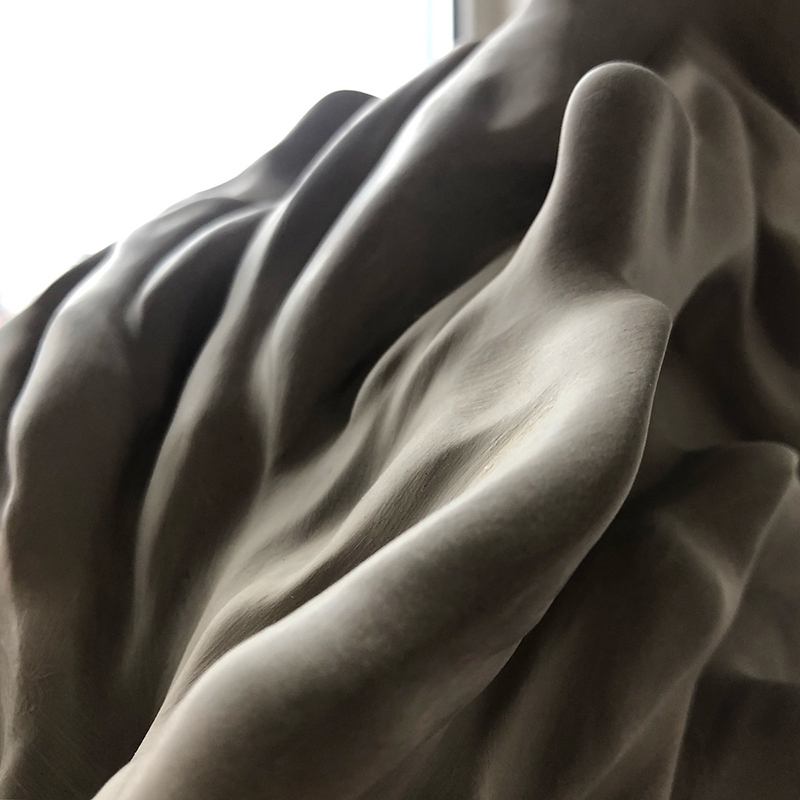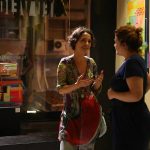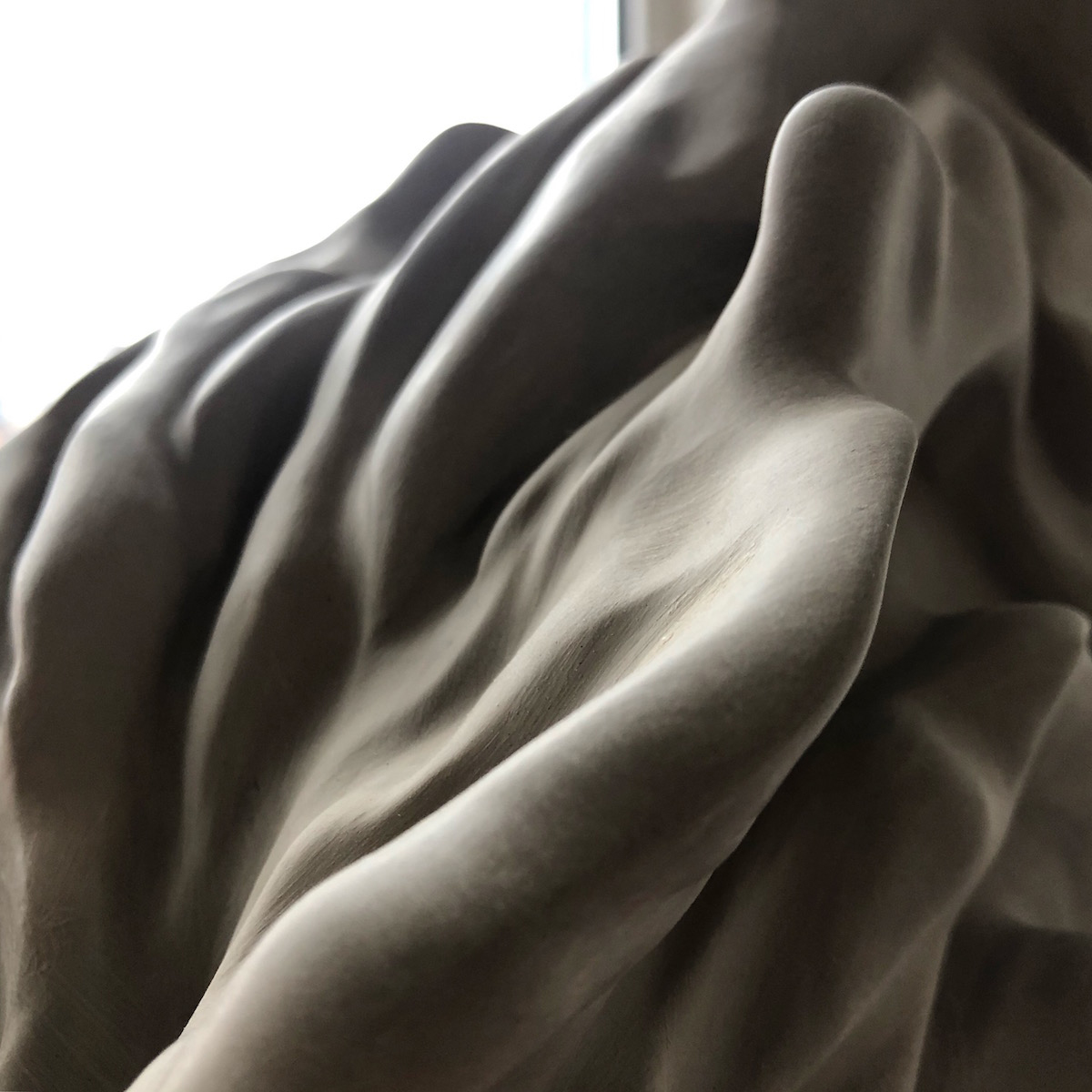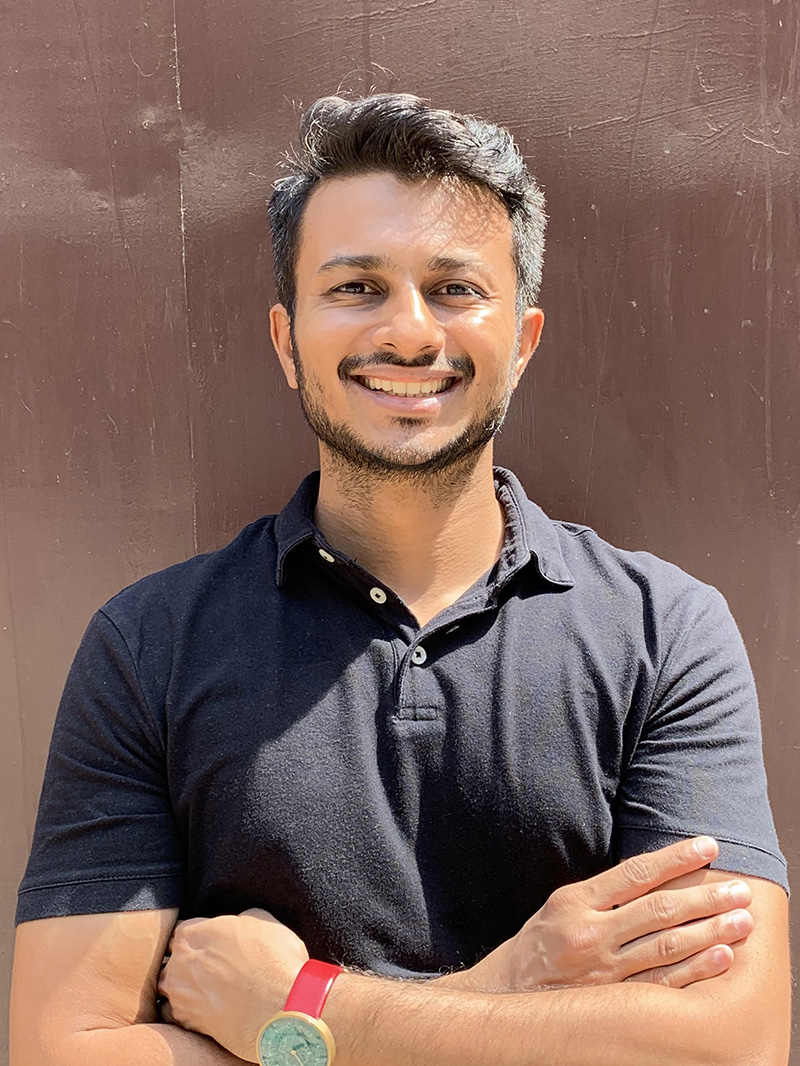A sensual, felt world is what contemporary artist Richard Stone is creating.
For me it’s vital to remain open to a conversation that emerges in the moment of making. I often think the best works come out of an acceptance of failure, so a work inherently survives or it doesn’t and that’s okay.

Contemporary artist Richard Stone. Artist portrait in Italian studio.
Please tell us a little about yourself. What brought you to the world of art?
I have always said that there is a point where the world of art comes to you, ignites something in the mind’s eye and becomes a journey that lasts a lifetime. It’s a way to understand and navigate the world. I think there has always been a sense of the sublime in my vision even before I knew what the sublime was. My work has been a process of bringing that back to the world and the world of art somehow. I followed a fairly traditional path through that position – through art school, through life and as a practicing artist now, which has its own richness that I hope that comes through in the work.
How do you describe yourself in the context of challenging people’s perspectives via your work and art?
I really think there is a sensuality to the world that we live in, but that we have moved incredibly far from it. Materiality has become a medium for me to reconnect with that sensuality. There’s a conscious countering to the flatness with my approach to sculpture and its fluidity and movement that resists what we have created for ourselves through the flatness of our phone screens. As much as these screens have opened space out and connected us, they have simultaneously closed it and isolated us. I see a lot of harsh lines, digital production and distortion in contemporary sculpture that echoes this flattening which feels reductive. It often feels like we have reduced ourselves to a world once perceived as flat. I wouldn’t say that I’m completely against the beauty of information and we all have to engage in the culture of the world we live in, but I’m more interested in a felt sense of the world, of nature, of history and, perhaps, how my own history might find its way through the work and connect with others.

Contemporary artist Richard Stone. Sentinel. Statuario marble. 30 x 18 x 15 cm.
How do you deal with the conceptual difficulty and uncertainty of creating new work?
I completely ignore it. By that I mean I go straight to a block of clay for instance, and wrestle or flow with ideas and forms that emerge in that material exchange. I never make drawings for works, aside from drawings in and of themselves. I rarely use armatures. For me it’s vital to remain open to a conversation that emerges in the moment of making. I often think the best works come out of an acceptance of failure, so a work inherently survives or it doesn’t and that’s okay.
Let’s talk about the evolution of your practice over the years. Tell us about your commitment to your current medium.What would you call your style?
I have learnt to embrace an eclectic vision that has come out of engaging with many different mediums over a long period of time. I genuinely think an idea ultimately emerges in the medium that best expresses it. Having said that, I have revisited ideas years apart and reinterpreted them based on my experience of using a material in the now. This includes figurative works combining found objects with amorphous forms to combining found objects with draped forms – a point I could only have got to through experience. I think it’s difficult to assign a style to oneself. It’s like art rightfully doesn’t belong to you anymore when it comes into being. It belongs to those who see and connect with it. But if anything, people generally connect with the sense of fluidity and movement in my work and the desire to reach out to it.
Let’s talk about your frameworks, references and process. What inspires you?
Again, my inspirations are eclectic. I’m a fan of romanticism and I’m a keen admirer of Modern British. I relate to the female abstract expressionists and I like contemporary sculpture that has a figurative and abstract element to it simultaneously. Maybe there’s something about strength and vulnerability in those choices, but there is definitely something about vitality and transcendence. I’m also equally inspired by a line from a book or a song, something that moves me. I also realise that nature finds its way into my work. A recent work of mine The rapture (after Henry Moore) aligns itself in many ways to nature with a Henry Moore bronze bird from 1959. In Moore’s few abstract bird forms, these often appear at a point of reclining or falling, or are abstracted much further. In my interpretation, I wanted a sense of a bird not reclining or falling, but rising back and upwards in fluid and unfolding abstraction. I don’t always work this way, but I often respond to the histories that came before me whilst attempting to offer a contemporary reimagining.

Detail of work in progress.
Let’s talk about your career, or if you prefer artistic journey. What were your biggest learning and hiccups along the way?
There’s plenty to choose from. Failure is as important as success, or at least what you take from your experiences of that. My ambition can get in the way and I have made works that belong to the future because I’m often passionate about being somewhere I’m still journeying to.
How does your audience interact and react to your work?
There’s often an instant connection to engage with the work and I think that’s too important to be taken for granted. To hold someone’s attention in a world that can often be loud in its layers of distraction is a blessing really. There’s that direct engagement but there are social platforms where the beauty of information within that flatness described earlier can be incredibly connecting for artists. Personally, it’s great to see what other artists are doing, especially when you let go of the curse of comparing, and a medium like Instagram enables artists to curate content that presents a vision of their work to the world. I was really thrilled a few years ago to be included in a book entitled Nature Morte by Michael Petry because it put my work in an historical and contemporary context alongside artists of this generation and the previous ones.

Only in the ruins will you be free. Contemporary artist Richard Stone. Statuario marble. 91 x 61 x 12 cm.
What are you looking for when you look at other artists’ work? Which shows, performances and experiences have shaped your own creative process? Who are your maestros? Whose journey would you want to read about?
I saw the Lee Krasner exhibition at the Barbican in London recently and it was a revelatory experience, not just in the work and curation itself but in what she stood for and had to say. I especially resonated with an accompanying statement presented there: “Unlike most of her contemporaries, Krasner refused to develop a ‘signature image’, which she considered to be ‘rigid rather than alive’. Working in cycles, she continuously sought out new means of authentic expression.”
How do you resolve the conflict between the commercial and the creative? How does your interaction with a curator, gallery or client evolve?
I’ve been very fortunate in that I have been given a lot of creative freedom, even in a commission context, along with making work for exhibitions.

His key monochrome. Contemporary artist Richard Stone. Oil, oil stick on canvas, ivy, tulip wood moulding, dark oak finish. 90 x 120 x 4 cm.
What was your first sale? Do you handle the commercials yourself or is it outsourced to a gallery or an agent?
My tutors bought my first pieces of work and I have been supported by a network of incredible people over a long period of time. I’m also represented by Kristin Hjellegjerde Gallery in London.
How many works do you make in a year? How many would you like to be making?
This really depends on what is happening that year, if it’s work for an exhibition or an art fair. It could be anything from two to 22 works, including sculpture and painting. With sculpture alone, because I work in sculptural materials including bronze and marble, each work can take up to six months to make, from conception to realization – so it really is a balancing act of time and available resources. My studio has a range of sculptural maquettes towards substantial exhibitions that only await the time and resources to realise fully.
Think of the biggest professional risk you’ve taken. What helped you take that risk?
I think art fairs are a professional risk for everyone, gallerists and artists. There is pressure to be seen at as many art fairs as possible as an indicator of success, when there are many other ways in which gallerists and artists can take risks aside from that.

Living la vida rococo. Contemporary artist Richard Stone. 55 x 37 x 17 cm.
What is the best piece of advice you have received? Why was it helpful?
I can’t recall who said it, but it was something like, remember, you’re a good artist at forty, a great artist at fifty. I took it to mean that artists do make really strong work early on, but I think there’s something honest in how much you have to grow and how resilient you need to be to make a career in the art world.
Tell us about your studio? Could you describe your usual work day in the studio?
My studio is in Dalston and I work with other studios in London and in Italy too. I have to be fairly resourceful with how I use my studio in Dalston and am often reconfiguring a modest space. My routine is fairly consistent. I work from the moment I walk in to the studio to the moment I leave without many pauses – it becomes a world within a world.

NatureMorte, Contemporary artist Richard Stone. Guild Hall Art Gallery, London, 2017.
Are you more of a studio artist or naturally collaborative by nature? How do you feel about commissions?
You could describe me as a studio artist but I have always been keen to develop works in the public realm, with architects and in the realm of interiors.
What are you working on now? What’s coming next season?
I’m currently showing new works in a group exhibition with Kristin Hjellegjerde Gallery in London which continues until May. I’m really excited about a forthcoming joint exhibition with the same gallery in August with Lorena Garcia Mateu.
There will be some consolidation of ideas and some new ones that might yield subtle shades of colour in sculpture for the first time, but that might be giving too much away.
Is there any topic lately that you would like to be mentored on?
It’s so important to remain open to learning and I’m always keen to explored the practical and the intellectual.
For enquiries contact: artist@richardstoneprojects.com
Before you go – you might like to browse our Artist Interviews. Interviews of artists and outliers on how to be an artist. Contemporary artists on the source of their creative inspiration.












Add Comment